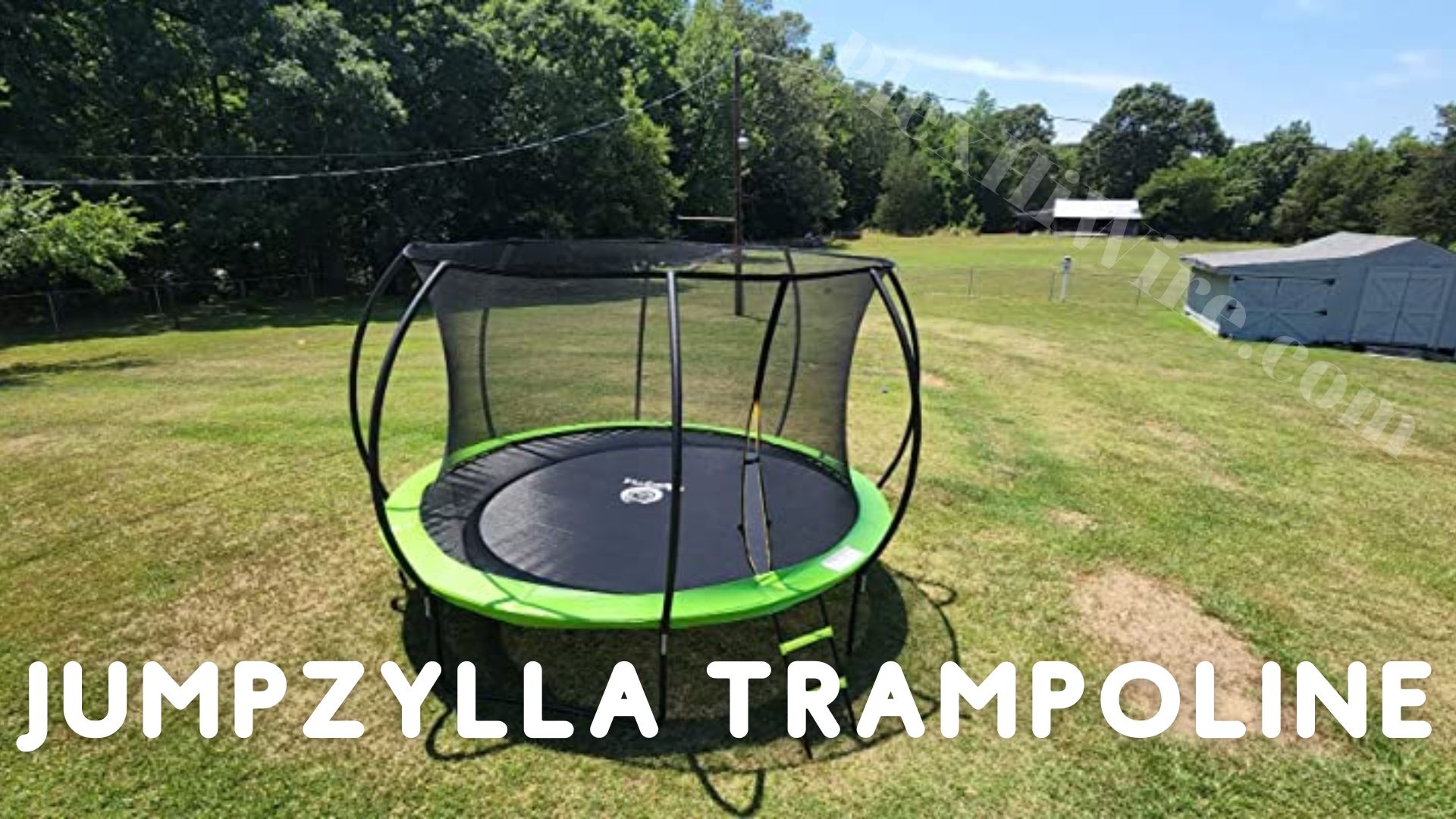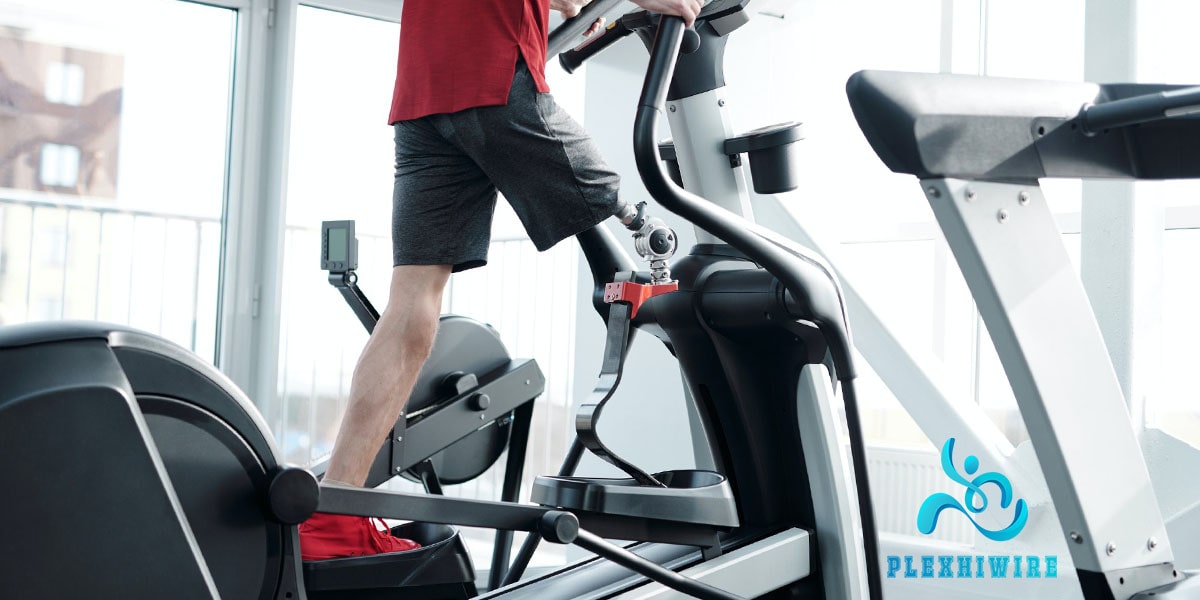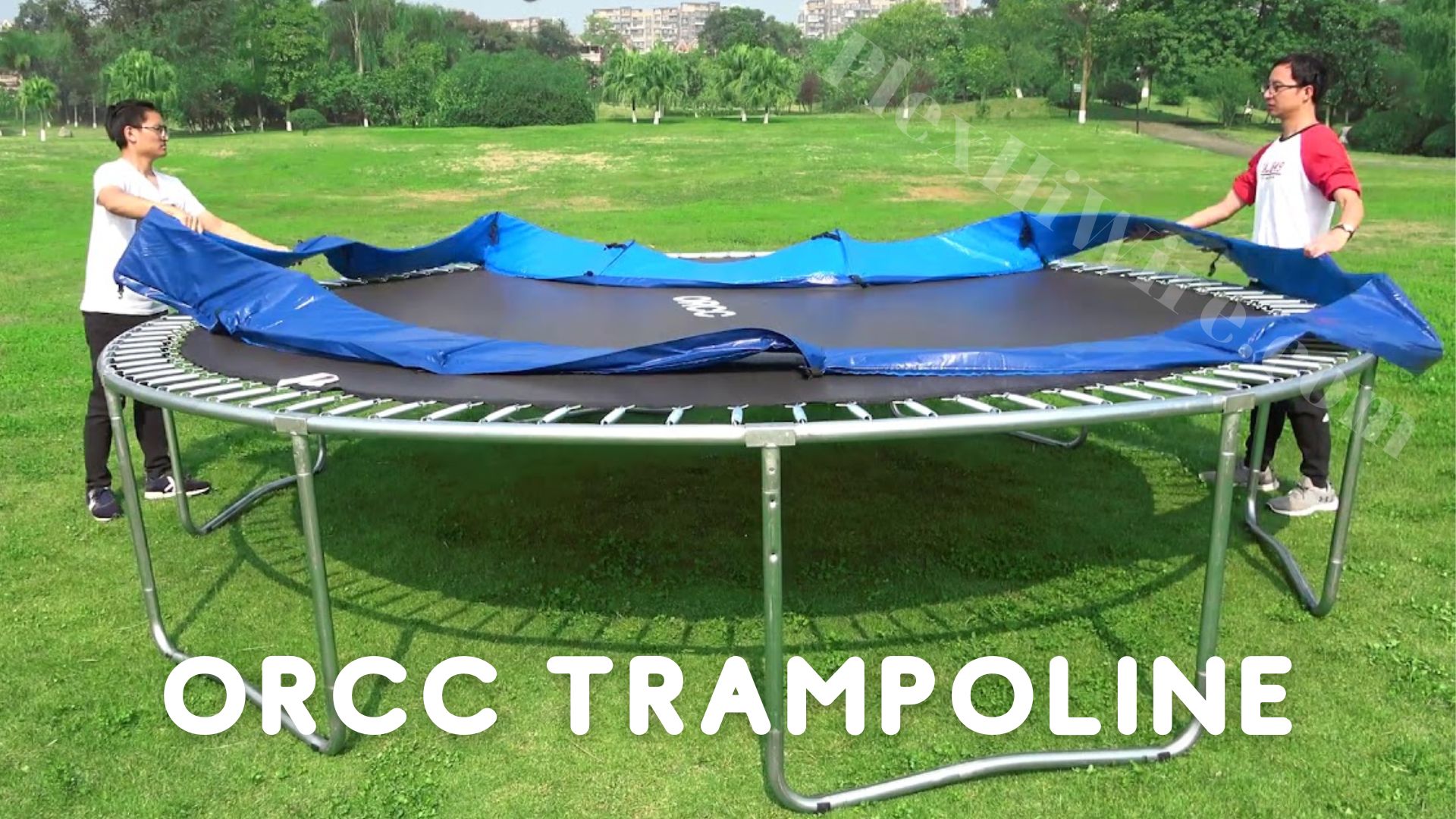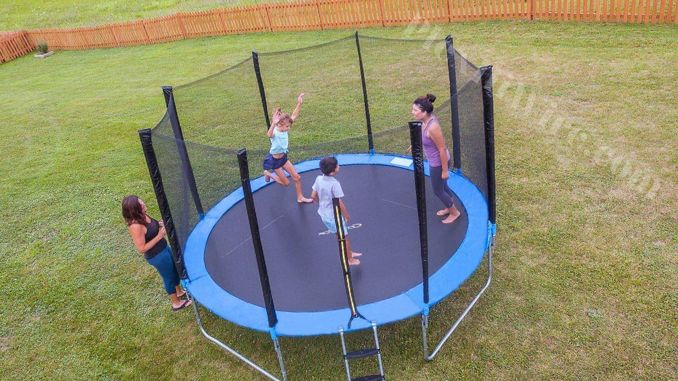Why is My Toe Numb While Cycling Indoors?
Have you ever been cycling indoors and suddenly felt your toes going numb? It can be an uncomfortable, strange sensation that leaves you wondering what’s going on. If you find yourself asking, “Why is my toe numb while cycling indoors?” then this post is for you! We will examine the main causes of why cyclists experience foot or toe numbness, explain other associated symptoms to look out for, and suggest tips for prevention – as well as treatments if needed. Let’s start off by exploring some possible reasons why your toes may go numb during indoor cycling sessions.
If you’re an avid cyclist, then we don’t need to tell you how frustrating it can be when your toes are numb while cycling indoors. Not feeling the pressure of the pedals is not only uncomfortable, but it can also be dangerous if you cannot control your speed properly and maintain a good balance on your bike. Numbness in the feet can actually have a range of causes from ill-fitting shoes to circulation problems – so learning which one applies to you may help with finding long-term relief from this issue. Read on to explore possible causes of your toe issue and learn how you can get back the sensation in your toes so you can enjoy those cozy indoor cycling rides once again.
- Why is My Toe Numb While Cycling Indoors?
- What are the Potential Causes of Numbness in the Feet While Cycling Indoors?
- Warm-Up Exercises Before Indoor Cycling to Avoid Numb Feet
- Is There Any Way to Prevent Numbness in My Toes while Cycling
- Are There Stretches that Can Help Reduce Numbness in Toes During Indoor Cycling Workouts?
- What are Some Tips for Improving Posture While Cycling Indoors to Prevent Injury or Discomfort?
- How Can I Adjust My Exercise Bike Setup to Reduce Foot Numbness?
- What Foods Should be Eaten After Numbness in the Feet While Indoor Cycling?
- Indoor Cycling Technique to Not Numb Toe
- What Shouldn’t Do for Toe Numbness After Indoor Cycling?
- Does Shoe Fit Have Anything to Do with Numb Toes?
- Frequently Asked Questions
- Conclusion
What are the Potential Causes of Numbness in the Feet While Cycling Indoors?
Numbness in the toes while cycling indoors can be a troubling and painful experience for cyclists. There are several potential causes of this condition, which may vary from person to person.
One potential cause of foot numbness is improper foot positioning on the pedals. Cyclists who ride for long periods with their toes pointed excessively down or up may experience pressure or compression on the nerves and blood vessels in the feet. This can lead to a loss of sensation and tingling in the feet.
Another possible cause of foot numbness during indoor cycling is poorly fitting footwear. Shoes that are too tight or too loose may shift around on the pedal, causing unnecessary friction and irritation. This can contribute to numbness and discomfort in the feet.
Additionally, cycling on a hard or unyielding surface, such as concrete or hardwood, can also lead to numbness in the feet. The repetitive impact on the soles of the feet can cause nerve compression and blood flow restriction, resulting in a loss of sensation and tingling.
Lastly, toe numbness during indoor cycling may result from poor posture and technique. Cyclists who lean too far forward or back, or who put too much weight on their hands or feet, may experience pressure on the nerves and blood vessels in the feet. This can cause a range of symptoms, including numbness, tingling, pain, and weakness.
In conclusion, there are several potential causes of numbness in the feet while cycling indoors, including improper foot positioning, poorly fitting footwear, hard or unyielding surfaces, and poor posture and technique. To prevent or manage foot numbness, it is essential to maintain proper form, wear appropriate footwear, and choose a suitable riding surface. Additionally, taking regular breaks and performing foot stretches and exercises can help alleviate symptoms and improve foot health.
Warm-Up Exercises Before Indoor Cycling to Avoid Numb Feet
Indoor cycling is an excellent way to get fit and improve your cardiovascular health. However, one of the most common issues faced by cyclists is numb feet. This condition can be quite frustrating and even painful, which is why it is essential to take measures to prevent it from occurring. One of the most effective ways to avoid numb feet is by doing warm-up exercises before starting your cycling workout.
Warm-up exercises are crucial to prepare your body for the intense activity that follows. They help to increase blood flow to your muscles, warm them up and prevent discomfort and injury. Proper warm-up exercise can help activate the muscles in your feet, reducing the chances of getting numb or tingling feet during cycling.
Some great warm-up exercises for indoor cycling include stretching your calves, flexing your feet, and rotating the ankles. It is also beneficial to do some dynamic stretching, such as high knees, butt kicks, and leg swings. These exercises help to increase your heart rate, elevate body temperature, and improve overall flexibility, making you more prepared for your workout.
Research indicates that proper warm-up exercises improve not only physical performance but also mental focus and emotional readiness. It makes your mind alert and your body energized, making it easier to ride faster and further.
Additionally, warm-up exercises provide an excellent opportunity for you to gradually transition to higher intensity levels. By gradually increasing your efforts, your body adapts better and avoids injuries such as strained muscles, tendinitis, and shin splints.
Read more: Is Indoor Cycle USA Popular?
In conclusion, warm-up exercises are essential before indoor cycling. They help improve blood flow, prevent injury, and enhance physical and emotional performance. Incorporating warm-up exercises into your cycling routine can help prevent numb feet and keep your workout enjoyable, productive, and safe.
Is There Any Way to Prevent Numbness in My Toes while Cycling
Cycling on an indoor bike is an excellent way to stay fit and healthy, especially during cold weather or when outdoor activities are unavailable. However, many people complain about numbness or tingling sensations in their feet when cycling indoors for prolonged periods. This discomfort can be due to various reasons, such as improper footwear, wrong seat height, or incorrect pedal cleat position. However, often the primary cause is a poor cycling posture that puts excessive pressure on the forefoot and toes, decreasing blood circulation and nerve function.
Therefore, to avoid numbness in your feet while cycling indoors, it’s crucial to adopt a proper posture that distributes your weight evenly and supports your body’s natural alignment.
Firstly, ensure that your cycling shoes fit correctly and provide ample support to your feet. Avoid using worn-out or ill-fitting shoes that may compress your toes, restrict blood flow, or cause blisters and hot spots.
Secondly, adjust your seat height and position to match your leg length and riding style. A proper seat height allows you to pedal smoothly without straining your knees, while a comfortable seat angle prevents you from sliding forward and putting excess weight on your toes.
Thirdly, maintain a neutral spine posture by keeping your lower back slightly arched and avoiding excessive rounding or arching. This position engages your core muscles and reduces stress on your lower back by shifting your upper body’s weight towards your buttocks and hips.
Fourthly, relax your shoulders and arms and keep your elbows bent to alleviate tension in your neck, shoulders, and forearms.
Lastly, keep your feet level and balanced on the pedals and avoid toe scrunching or gripping, which can impede blood flow and sensation in your feet.
By adopting these ergonomic guidelines, you can improve your cycling posture, avoid numbness and tingling in your feet, and enjoy a comfortable, efficient, and injury-free indoor cycling experience. So, next time you hop on the indoor bike, take a moment to check your posture and make the necessary adjustments for a more enjoyable and rewarding workout session.
Are There Stretches that Can Help Reduce Numbness in Toes During Indoor Cycling Workouts?
When it comes to indoor cycling workouts, many people report experiencing numbness in their toes. This can be a frustrating and uncomfortable issue, as it can make the workout less enjoyable and even painful. Luckily, there are several stretches that can be done to help reduce numbness and improve the overall comfort of the workout.
One common cause of toe numbness during indoor cycling is tightness in the calves, so stretching these muscles can be very helpful. One stretch that is particularly effective is the downward-facing dog pose. To do this stretch, begin in a plank position with your hands and feet on the ground. Then, lift your hips up and back, creating an upside-down V shape with your body. Hold this pose for 30 seconds to a minute, feeling a deep stretch in your calves and hamstrings.
Another helpful stretch is the seated spinal twist. To do this stretch, sit with your legs out in front of you and your feet flexed. Then, bend your right knee and place your foot on the outside of your left knee. Place your right hand on the ground behind you and your left elbow on the outside of your right knee. Twist your torso to the right, looking over your shoulder. Hold this stretch for 30-60 seconds, then repeat on the other side.
Additionally, toe stretches can be done to specifically target the toes and relieve numbness. One simple stretch is to sit on the ground with your legs straight out in front of you. Then, loop a towel or resistance band around the ball of your foot and gently pull back towards your body, feeling a stretch in your toes. Hold for 30 seconds, then repeat on the other foot.
It is important to remember to stretch before and after every indoor cycling workout, as well as during breaks in the workout. These stretches can help to increase blood flow to the toes and reduce the risk of numbness and discomfort. By incorporating these stretches into your routine, you can enjoy a more comfortable and effective indoor cycling experience.
What are Some Tips for Improving Posture While Cycling Indoors to Prevent Injury or Discomfort?
Cycling indoors on a stationary bike is a great way to stay fit and active, especially during unfavorable weather conditions or when it is not possible to venture outdoors. However, incorrect posture can cause discomfort and injury, affecting the overall effectiveness of the exercise. Improving posture while cycling indoors requires attention to detail, as it is essential to maintain proper alignment and use the correct muscles to avoid any adverse effects. Here are some tips to help you improve your posture while cycling indoors:
Adjust your bike to fit your body: Before you start cycling, make sure to adjust the bike to your body size and shape, taking into account your height, inseam, and arm length. This will ensure that your feet are positioned correctly on the pedals, your knees are bent at a comfortable angle, and your arms can reach the handlebars without straining your shoulders or back.
Keep your back straight: While cycling, keep your back straight and avoid slouching. This not only helps improve your posture but also engages the core muscles, leading to better balance and control. A straight back also helps distribute your weight evenly, reducing the risk of discomfort in your lower back.
Align your shoulders and hips: Ensure that your shoulders are aligned with your hips, maintaining a neutral position. This reduces the strain on your back and neck muscles, helping you maintain a comfortable and relaxed posture throughout your workout.
Engage your abs: Engaging your abdominal muscles helps support your back, leading to better posture and balance. A strong core also helps reduce the risk of back injuries caused by cycling.
Relax your neck and shoulders: Avoid hunching or tensing your shoulders, which can cause muscle stiffness and discomfort. Instead, keep your shoulders relaxed and your neck in a neutral position, looking forward toward the screen or window.
In summary, improving your posture while cycling indoors involves adjustments to your bike, maintaining a straight back, aligning your shoulders and hips, engaging your abs, and relaxing your neck and shoulders. By practicing these tips consistently, you can maximize the benefits of indoor cycling while minimizing the risk of discomfort or injury.
How Can I Adjust My Exercise Bike Setup to Reduce Foot Numbness?
If you frequently use an exercise bike, you’re probably aware of the discomfort that can arise from prolonged contact between your feet and the pedals. Foot numbness is a common issue faced by exercise bike users. But don’t let this problem deter you from using this useful piece of exercise equipment. Instead, consider modifying your exercise bike setup to reduce toe numb and make your workout experience more comfortable.
One of the first things you should consider while adjusting your exercise bike setup is the saddle height. If your saddle height is too low, it can cause you to pedal with too much knee bend, which can increase pressure on your feet. Conversely, if your saddle height is too high, it can cause you to stretch your legs too far, leading to unnecessary discomfort. Therefore, it is crucial to find the perfect saddle height that suits your body type and height.
Another factor that can contribute to foot numbness is the position of your feet on the pedals. If your feet are too far forward, it can cause pressure to be placed on the balls of your feet, leading to numbness. Conversely, if your feet are too far back, it can cause uncomfortable pressure to be placed on your heels. To find the optimal position, ensure that the balls of your feet are centered on the pedals and that your feet are flat while pedaling.
Know more: How to Stop Leg Cramps Immediately After Indoor Cycling
In conclusion, the adjustments mentioned above can help you reduce toe numb while using an exercise bike. It is essential to remember that pain or discomfort while exercising can be an indication of poor bike setup or improper footwear. Therefore, it is advisable to consult a fitness expert or physiotherapist if you experience persistent foot numbness during exercise. With the right adjustments, you can maintain a comfortable and effective workout routine.
What Foods Should be Eaten After Numbness in the Feet While Indoor Cycling?
Numbness in the feet is a common occurrence among indoor cyclists, particularly those who do not wear proper cycling shoes. This sensation is caused by the pressure exerted on the nerves in the feet for an extended period, leading to tingling, numbness, and even pain. To alleviate the symptoms of numbness in the feet after indoor cycling, it is advisable to consume certain foods that provide specific nutrients and have healing properties.
One of the best foods to eat after numbness in the feet while indoor cycling is bananas. Bananas are a rich source of potassium, a mineral that helps prevent muscle cramps and aids in nerve function. Potassium also regulates fluid balance in the body, which can help relieve swelling and reduce inflammation in the feet. Additionally, bananas contain vitamin B6, which assists in the synthesis of neurotransmitters that help in nerve communication, thus aiding in preventing numbness and tingling.
Another food to consume after indoor cycling is leafy greens. Spinach, kale, and other leafy vegetables are rich in magnesium, which is essential for muscle and nerve function. Magnesium also helps regulate blood sugar levels, which can reduce the risk of blood vessel damage that may lead to numbness in the feet. Additionally, leafy greens are a good source of vitamin K, which helps strengthen bones and regulate blood clotting.
Omega-3 fatty acids found in foods like salmon, flaxseeds, and avocados can help reduce inflammation and improve circulation in the body, which can alleviate numbness in the feet. These fatty acids also help support nerve function and can help prevent nerve damage.
Lastly, it is essential to stay hydrated after indoor cycling to prevent dehydration, which can lead to numbness and tingling in the feet. Drinking a sufficient amount of water can help regulate blood flow, reduce inflammation, and flush out toxins from the body, which can help alleviate the symptoms of numbness in the feet.
In conclusion, incorporating foods rich in potassium, magnesium, omega-3 fatty acids, and vitamins B6 and K can help relieve numbness in the feet after indoor cycling. By consuming these nutritious foods and staying hydrated, cyclists can maintain healthy nerve function and ultimately enjoy a more comfortable cycling experience.
Indoor Cycling Technique to Not Numb Toe
Indoor cycling has rapidly become one of the most popular forms of exercise, especially among those who are short on time and looking for a high-energy, calorie-burning workout. However, with this activity comes the risk of experiencing numbness and discomfort in the toes, which can be both painful and harmful if not addressed properly. Fortunately, there are a few indoor cycling techniques that one can adopt to prevent toe numbness and ensure a safe and enjoyable workout experience.
One of the most effective techniques for preventing toe numbness during indoor cycling is to ensure proper bike fit. This involves adjusting the saddle height, handlebar position, and pedal position to fit the rider’s body size and shape. When the bike fits well, the rider’s weight is distributed evenly across the pedals, reducing the pressure on the toes. It’s also essential to wear proper cycling shoes, as they provide better support, stability, and ventilation to the feet.
Another technique that can help prevent toe numbness during indoor cycling is to use the proper pedaling form. This involves engaging the core muscles, keeping the upper body relaxed, and keeping the knees aligned with the toes. When the rider pedals smoothly and efficiently, the pressure on the toes is minimized, preventing numbness and discomfort.
It’s essential for riders to take frequent breaks during long indoor cycling sessions to stretch and move around. This enables the toes to relax and restores circulation, reducing the risk of numbness. Additionally, using a foam roller or massage ball to roll out the calves and feet can also help alleviate any tension or soreness in the muscles and improve circulation.
Overall, preventing toe numbness during indoor cycling requires proper bike fit, pedaling technique, and the use of proper equipment, including cycling shoes. Frequent stretching and movement breaks and using foam rollers or massage balls can also help alleviate any discomfort. By adopting these techniques, riders can prevent toe numbness and enjoy a safe and comfortable indoor cycling experience.
What Shouldn’t Do for Toe Numbness After Indoor Cycling?
After an intense indoor cycling workout, it is not uncommon to experience toe numbness due to the sustained pressure on the feet and toes. It is important to take care of our bodies and avoid any actions that may exacerbate the problem. Therefore, it is essential to know what not to do for toe numbness to prevent any further discomfort.
Firstly, individuals should avoid forcefully massaging or pressing the affected area since it may cause additional trauma to the nerves and lead to more numbness. Instead, it is recommended to take a break and let the numbness subside on its own. Rubbing or shaking the feet could also aggravate the issue and may even cause damage to the delicate nerve endings.
Furthermore, one should avoid wearing tight-fitting or restrictive footwear post-workout as it can increase pressure on the toes and feet. This may prolong the numbness, causing more pain and discomfort. Instead, wear comfortable and breathable shoes that provide ample support and allow the feet to move freely.
It is also essential to stay hydrated, as dehydration can cause cramping and stiffness in the feet and legs. Adequate fluid intake helps muscles and nerves function at their optimal capacity, reducing the chances of numbness and other related issues.
Lastly, individuals should avoid pushing themselves beyond their limits while exercising as it can cause serious injuries to the body, including nerve damage. Gradual increases in intensity and duration of workouts are recommended to avoid any sudden stress on the body.
To sum up, toe numbness is a common side effect of indoor cycling, but individuals can take certain measures to prevent exacerbating the problem. It is advisable to avoid forcefully massaging or rubbing the affected area, wear tight-fitting shoes, stay hydrated, and not push oneself to limits. Taking care of our body is essential, and following these recommended precautions can help alleviate any discomfort associated with toe numbness after indoor cycling.
Does Shoe Fit Have Anything to Do with Numb Toes?
Shoe fitting is an important aspect of comfort and foot health. Poorly fitting shoes can cause a variety of foot problems, including numbness in the toes. When shoes fit too tightly, they can compress and pinch nerves, reducing blood flow to the toes. This can lead to numbness, tingling, and discomfort.
Additionally, shoes that are too narrow or have a narrow toe box can cause crowding of the toes, leading to constant pressure and friction. This can result in the development of blisters, calluses, and corns, which can further exacerbate pain and discomfort in the foot.
On the other hand, shoes that are too loose can also contribute to numb toes, as the foot can move around inside the shoe, causing friction and pressure on the nerves. This is particularly true for shoes with inadequate arch support, which can cause the foot to shift and slide around, creating tension and compression on the nerves.
Therefore, it is essential to choose shoes that fit well, with adequate space for the toes to move around, proper arch support, and a comfortable cushioned insole. It is also important to wear appropriate shoes for the activity and to replace shoes regularly, as worn-out shoes can lose their cushioning and support, leading to foot problems.
In summary, the fit of a shoe is critical in preventing numb toes. Properly fitting shoes with sufficient space, arch support, and cushioning are essential to maintain foot health and prevent discomfort. It is important to take care in selecting the right pair of shoes to avoid aches, pains, and numbness in the toes.
Frequently Asked Questions
How Long Does It Take for Leg Numbness to Go Away?
Leg numbness can be an unnerving sensation that can raise a lot of questions. One of the most common questions that people ask is how long it takes to go away. Unfortunately, there is no definitive answer to this question. The length of time it takes for leg numbness to subside depends on the root cause of it. Some cases of leg numbness may take only a few minutes to disappear, while others may take several weeks or months. If leg numbness persists over time or is accompanied by other symptoms, it’s best to consult with a healthcare provider. In most cases, though, people can expect their leg numbness to lessen within a few moments to a few days.
When Should I be Worried about Numbness in My Toes?
Numbness in your toes can be a worrisome sensation, especially if it persists or becomes increasingly frequent. Although there can be many causes for numbness in this area, it may be a sign of a larger problem that needs medical attention. If you experience sudden numbness in your toes accompanied by weakness or tingling sensations, you should seek medical advice immediately. In some cases, numbness can be a symptom of a more serious condition, such as nerve damage or an underlying medical condition. If you are ever unsure about the severity of your symptoms, it’s best to err on the side of caution and speak to your healthcare provider. An informed diagnosis and timely treatment can help prevent possible complications and ensure that your toes feel comfortable and healthy for years to come.
Conclusion
After cycling indoors, many people find that their toes have a feeling of numbness. While some cyclists may be used to the occasional numbness, if it is occurring frequently or at a severe level, it could be due to underlying medical conditions.
After extensively exploring the reasons for numbness in toes while cycling indoors, it is now clear that dehydration, poor bike fit, over-pedaling, and lack of stretching can all lead to numbness in toes while cycling. Although these are all contributing factors to having numb toes while cycling, addressing any potential deficiencies is essential for ensuring proper health and safety. If you’ve experienced uncomfortable numbness during your ride, make sure to consult your doctor or consider other preventive measures such as changing the way you pedal, installing cleats, or increasing your water intake. Doing so may save you time and energy from dealing with other factors that may be affecting you in different ways than you realize.
Taking action sooner than later will help ease any discomfort you may experience during workouts thereby ensuring that your rides stay enjoyable even with the changes that come with temperature fluctuations which might affect your sensitivity to touch in unexpected ways. Perfecting and improving your cycling habits now will lead to a more enjoyable biking experience down the road.
See more at our site: plexhiwire.com








